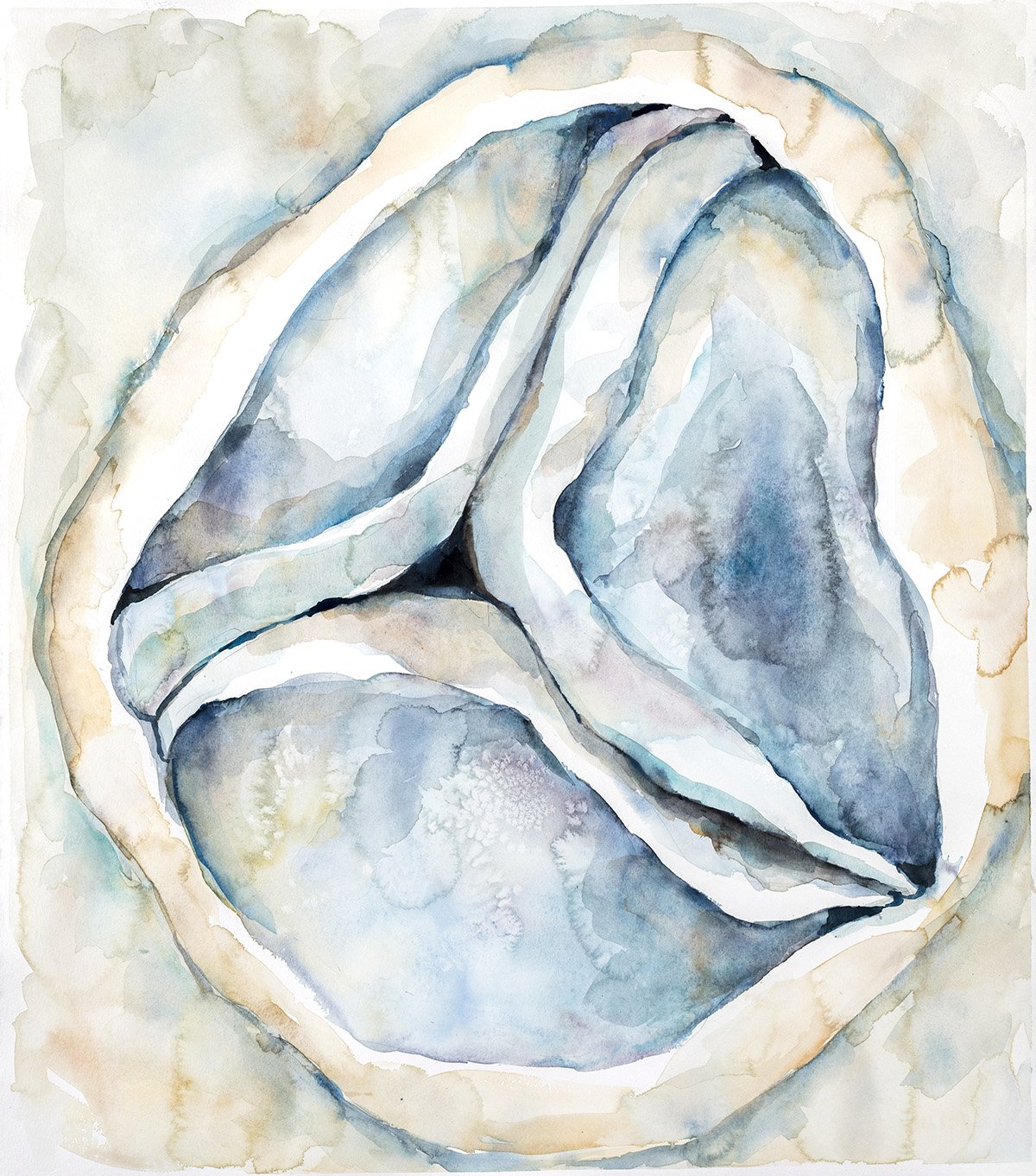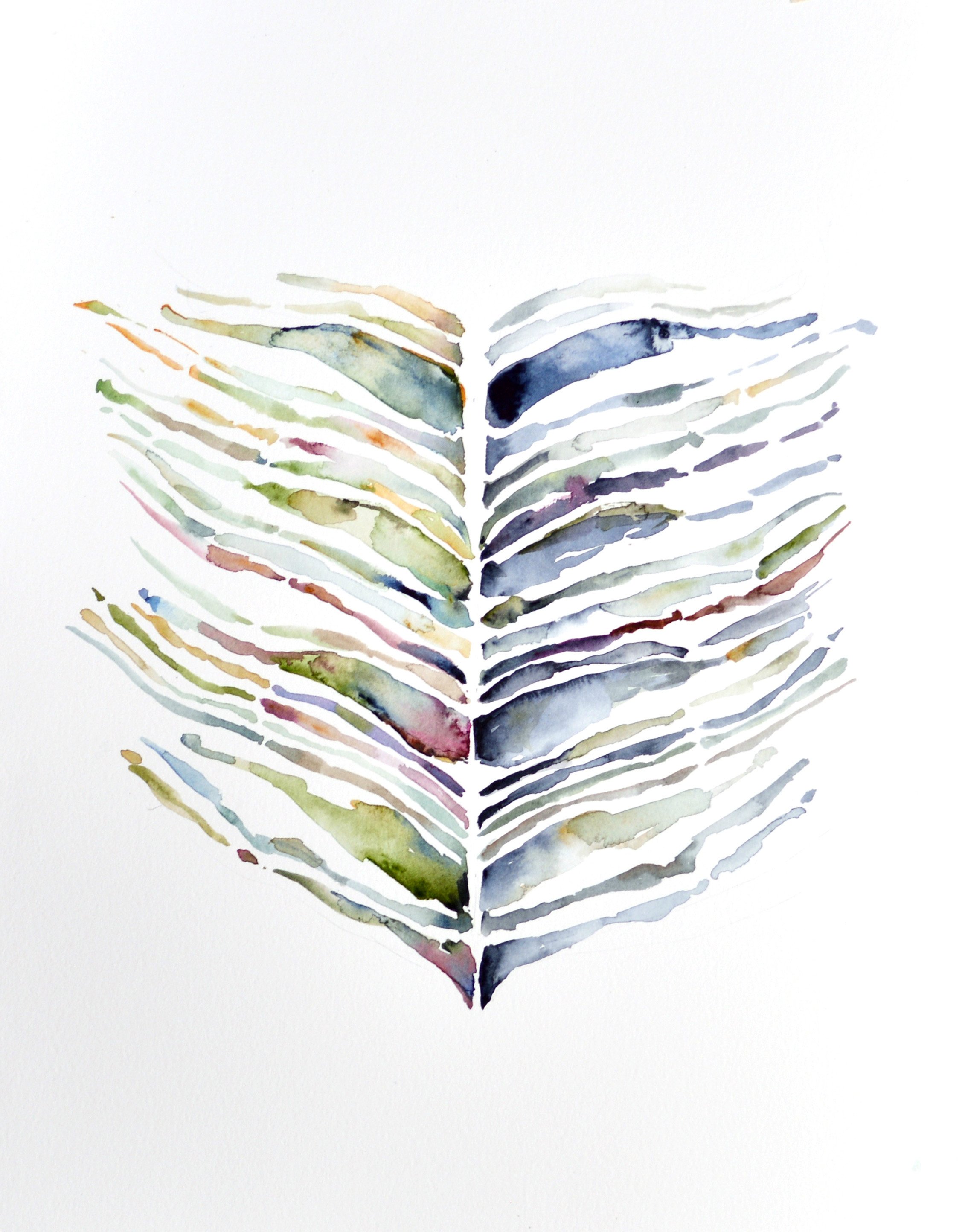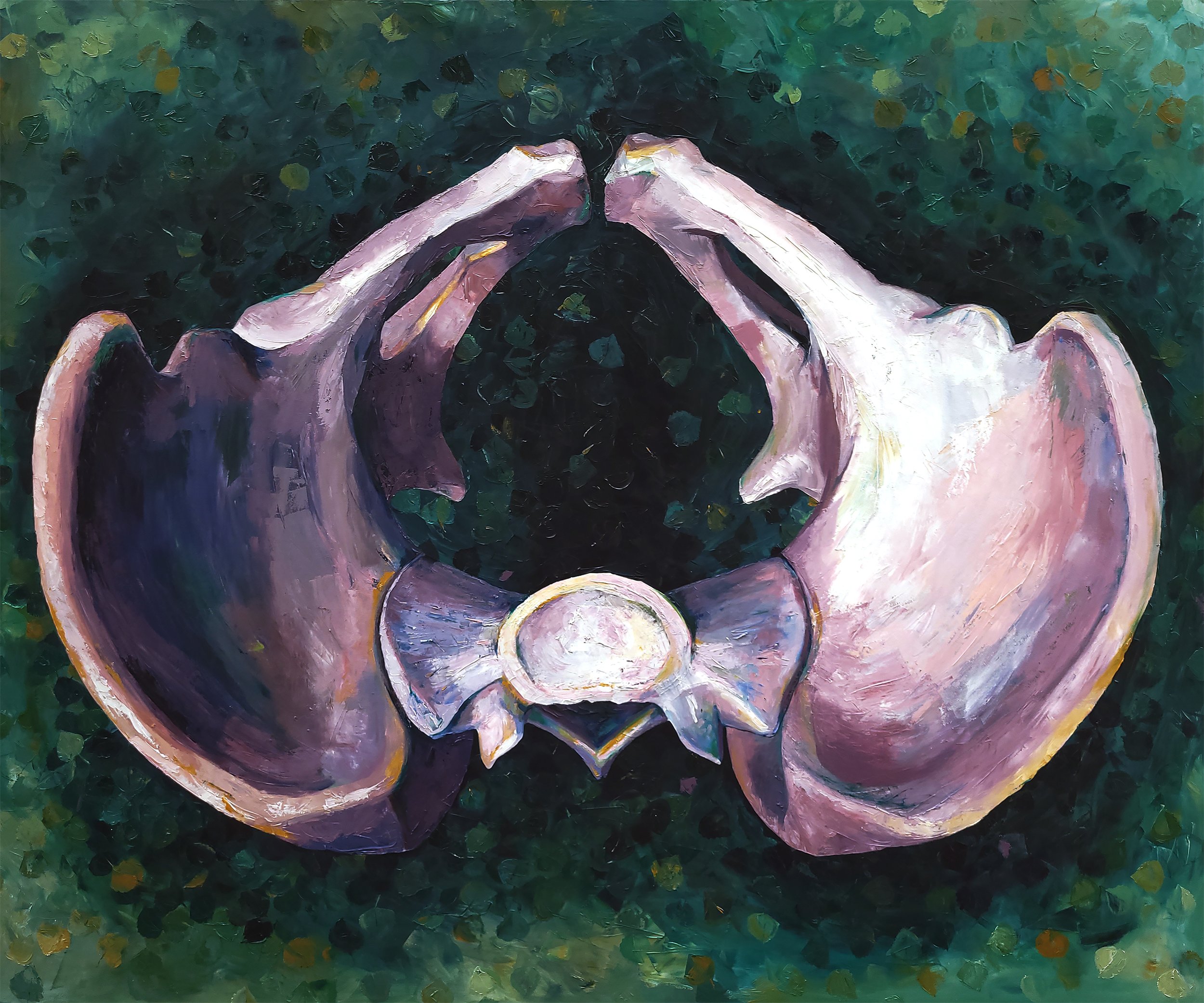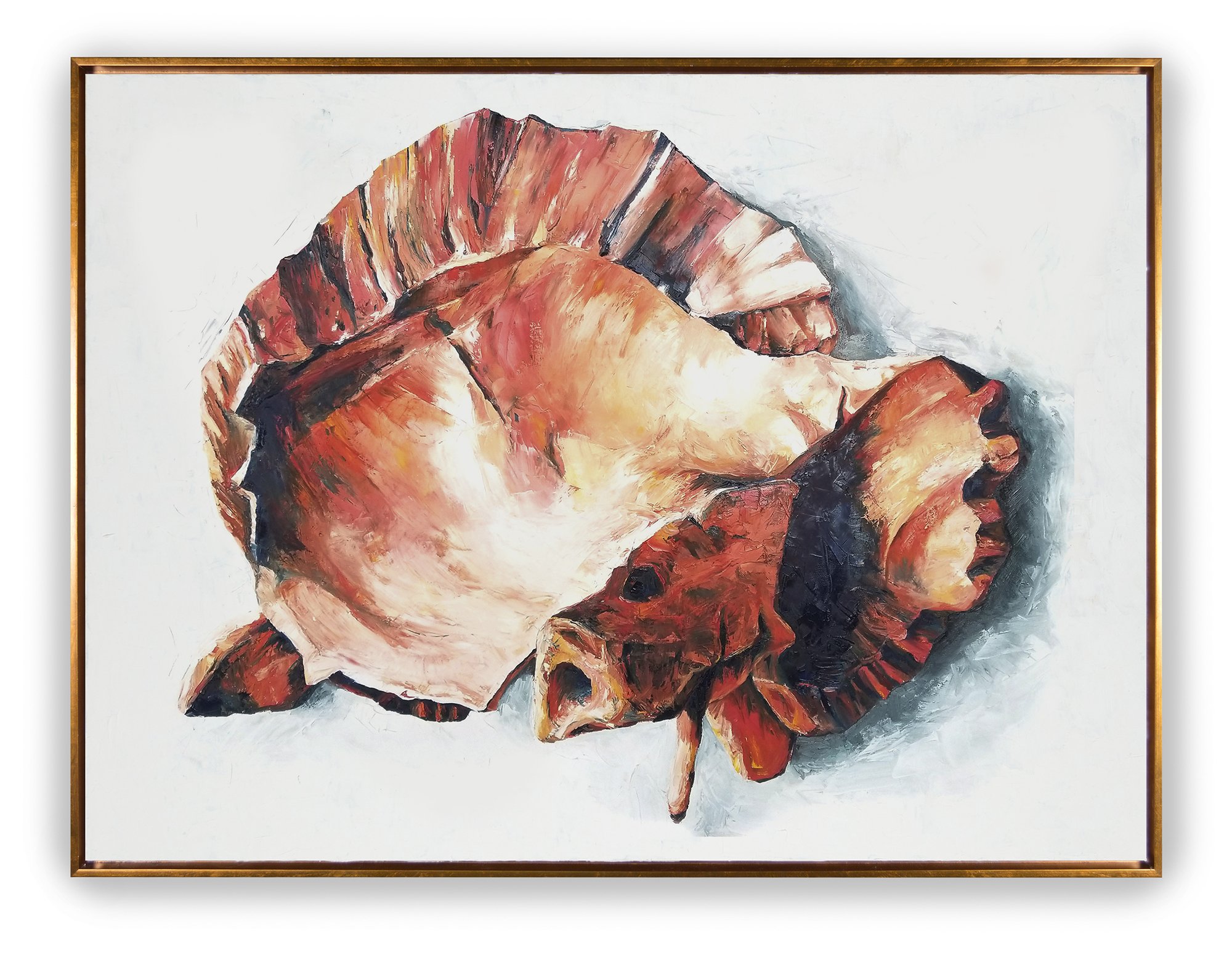Interview
Kaitlin Walsh
Kaitlin Walsh is an independent artist specializing in abstract anatomical watercolor and oil paintings. From a young age, she exhibited an immense fascination with both art and medicine.
She focused her studies on both disciplines, eventually receiving a graduate degree in Biomedical Visualization at the University of Illinois at Chicago, where she took a combination of fine art and med school courses. Soon after graduation, Kaitlin had her first child.
Her son spent several months in the hospital recovering from severe prenatal complications and an early birth. This was Kaitlin’s primary motivation to entirely focus her career on her passion: Portraying the beauty and complexity of the human body through painting. Her son’s initially precarious health status, while frightening, also compelled her to further appreciate the intricacies of functional anatomy.
After spending some time honing her craft and increasing her inventory, she launched her studio, Lyon Road Art, in 2015. She has now sold over 20,000 prints of her work and is a well-known name in the anatomical art community. Kaitlin lives happily in Madison, Wisconsin with her husband and three healthy children.
What is your background and how did you start your journey in the art world?
“I started my journey in the art world when I was a young child. I remember telling fellow kindergarteners that I colored and drew every single day. And that really hasn’t stopped. Art has been a part of who I am for as long as I can remember. My foray into the professional art world happened in two steps. Firstly, I discovered that there were graduate programs in medical illustration. I’ve always had a passion for the mysteries of anatomy and once I realized this could be my career, I threw myself into it. The second step happened when my son had a rough start, being born a few months early and spending some months in the hospital. This is when I decided I wanted to truly celebrate human anatomy through my paintings.”
What inspires you?
“The exquisite beauty, elusive mystery and captivating stories that can be found within the human body.”
“Using inspiration from both the form and function of human anatomy, my paintings explore the obscure, dynamic beauty hidden within the body. Through my studies, I have found that the human interior looks deceptively chaotic and haphazard.”
What themes do you pursue? Is there an underlying message in your work?
“Using inspiration from both the form and function of human anatomy, my paintings explore the obscure, dynamic beauty hidden within the body. Through my studies, I have found that the human interior looks deceptively chaotic and haphazard. In reality, every inch of the body is put together in a defined and methodical way, making possible both the functions of which we are all capable, and also the uniqueness of every individual.
Yet these capabilities, and the intricate structures that make them possible, are often disregarded: We consider the activities of the body background noise and fail to marvel at their power. But what if we could find the profound in the seemingly mundane? My work seeks to do this by unearthing the stories inherent to our anatomy. I hope to inspire a tradition of respect and appreciation for the overlooked..”



How would you describe your work?
“I would describe my work as realism with a dash of abstract.”
Which artists influence you most?
“Georgia O’Keeffe. She too took elements of nature and made them exciting and striking in simple but novel ways, such as color choice, intense zooming, or unusual points of view. Mary Cassatt, for how she unabashedly painted the mundane, everyday lives of women, especially mothers. And also Michelangelo, for his longevity and work ethic and humanist beliefs.”
What is your creative process like?
“Thankfully I have more ideas than I have time to paint. When I’m ready to execute an anatomical idea, I hunt through histology images and my anatomy and physiology atlases and textbooks, until I find a few images that strike me. Using these as a resource, I first do a watercolor sketch, then execute a final in either watercolor or oil. I don’t often sketch first with pencil unless I’m doing something with very fine detail, like a bone or portrait.”
What process, materials, techniques, etc, do you use to create your artwork?
“I paint in either watercolor or oils. For watercolor I paint almost exclusively on hot press 300 gsm paper (I feel as though you get the best watercolor effects on hot press) and use Winsor & Newton pan watercolors. For oil I paint as much as I can, I prefer painting with a palette rather than brush. I also use minimal solvents, as I prefer the look of undiluted oil paint.”
What is an artist’s role in society and how do you see that evolving?
“An artist’s role is to combine talent, creativity and profundity into things that expose truths, inspire society and create feelings within the viewer’s heart and soul. The influence and prestige of artists has ebbed and flowed throughout time, but I believe this fundamental role does not and will not.”






